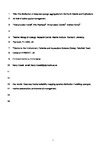The distribution of deep-sea sponge aggregations in the North Atlantic and implications for their effective spatial management.
| dc.contributor.author | Howell, Kerry | |
| dc.contributor.author | Piechaud, Nils | |
| dc.contributor.author | Downie, AL | |
| dc.contributor.author | Kenny, A | |
| dc.date.accessioned | 2016-07-27T08:33:13Z | |
| dc.date.issued | 2016-09-01 | |
| dc.identifier.issn | 0967-0637 | |
| dc.identifier.issn | 1879-0119 | |
| dc.identifier.uri | http://hdl.handle.net/10026.1/5116 | |
| dc.description.abstract |
Sponge aggregations have been recognised as key component of shallow benthic ecosystems providing several important functional roles including habitat building and nutrient recycling. Within the deep-sea ecosystem, sponge aggregations may be extensive and available evidence suggests they may also play important functional roles, however data on their ecology, extent and distribution in the North Atlantic is lacking, hampering conservation efforts. In this study, we used Maximum Entropy Modelling and presence data for two deep-sea sponge aggregation types, Pheronema carpenteri aggregations and ostur aggregations dominated by geodid sponges, to address the following questions: 1) What environmental factors drive the broad-scale distribution of these selected sponge grounds? 2) What is the predicted distribution of these grounds in the northern North Atlantic, Norwegian and Barents Sea? 3) How are these sponge grounds distributed between Exclusive Economic Zones (EEZs) and High Seas areas? 4) What percentage of these grounds in High Seas areas are protected by the current High Seas MPA network? Our results suggest that silicate concentration, temperature, depth and amount of particulate organic carbon are the most important drivers of sponge distribution. Most of the sponge grounds are located within national EEZs rather than in the High Seas. Coordinated conservation planning between nations with significant areas of sponge grounds such as Iceland, Greenland and Faroes (Denmark), Norway (coastal Norway and Svalbard), Portugal and the UK, should be implemented in order to effectively manage these communities in view of the increasing level of human activity within the deep-sea environment. | |
| dc.format.extent | 309-320 | |
| dc.language | en | |
| dc.language.iso | en | |
| dc.publisher | Elsevier BV | |
| dc.subject | Deep-sea | |
| dc.subject | Habitat suitability mapping | |
| dc.subject | Species distribution modelling | |
| dc.subject | Sponges | |
| dc.subject | Marine conservation | |
| dc.subject | Environmental management | |
| dc.title | The distribution of deep-sea sponge aggregations in the North Atlantic and implications for their effective spatial management. | |
| dc.type | journal-article | |
| dc.type | Journal Article | |
| plymouth.author-url | https://www.webofscience.com/api/gateway?GWVersion=2&SrcApp=PARTNER_APP&SrcAuth=LinksAMR&KeyUT=WOS:000386984200024&DestLinkType=FullRecord&DestApp=ALL_WOS&UsrCustomerID=11bb513d99f797142bcfeffcc58ea008 | |
| plymouth.volume | 115 | |
| plymouth.publication-status | Published | |
| plymouth.journal | Deep Sea Research Part I: Oceanographic Research Papers | |
| dc.identifier.doi | 10.1016/j.dsr.2016.07.005 | |
| plymouth.organisational-group | /Plymouth | |
| plymouth.organisational-group | /Plymouth/Faculty of Science and Engineering | |
| plymouth.organisational-group | /Plymouth/Faculty of Science and Engineering/School of Biological and Marine Sciences | |
| plymouth.organisational-group | /Plymouth/REF 2021 Researchers by UoA | |
| plymouth.organisational-group | /Plymouth/REF 2021 Researchers by UoA/UoA07 Earth Systems and Environmental Sciences | |
| plymouth.organisational-group | /Plymouth/Research Groups | |
| plymouth.organisational-group | /Plymouth/Research Groups/Marine Institute | |
| plymouth.organisational-group | /Plymouth/Users by role | |
| plymouth.organisational-group | /Plymouth/Users by role/Academics | |
| plymouth.organisational-group | /Plymouth/Users by role/Researchers in ResearchFish submission | |
| dcterms.dateAccepted | 2016-07-15 | |
| dc.rights.embargodate | 2017-7-16 | |
| dc.identifier.eissn | 1879-0119 | |
| dc.rights.embargoperiod | 12 months | |
| rioxxterms.versionofrecord | 10.1016/j.dsr.2016.07.005 | |
| rioxxterms.licenseref.uri | http://www.rioxx.net/licenses/under-embargo-all-rights-reserved | |
| rioxxterms.licenseref.startdate | 2016-09-01 | |
| rioxxterms.type | Journal Article/Review |


